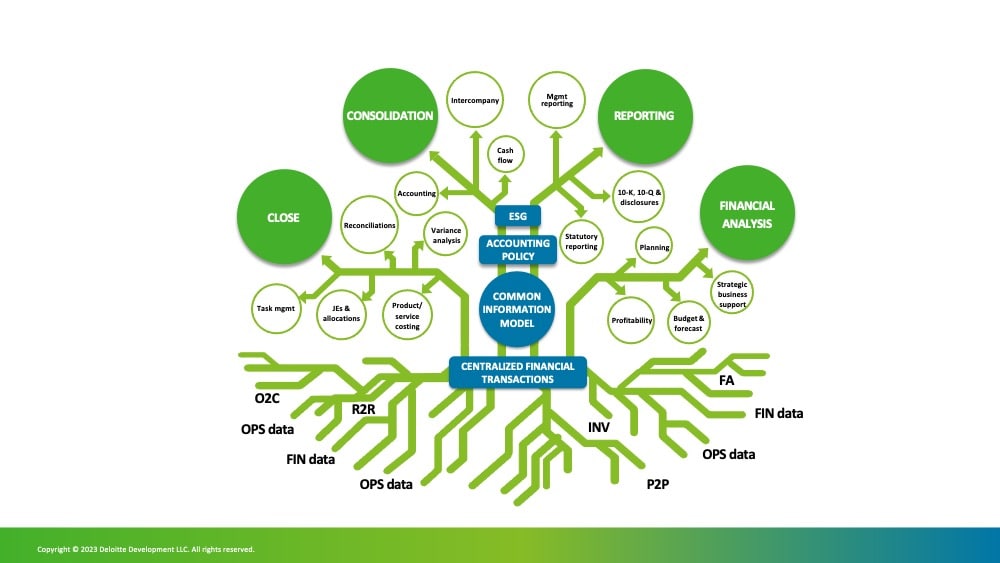Taking control of the wheel has been saved

Perspectives
Taking control of the wheel
Establishing effective operating models for the future of controllership
June 20, 2023
A blog post by Beth Kaplan, Katie Glynn and Alex Smith
As the controllership function evolves with the changing landscape, how the function operates for optimal performance can be a challenge. Organizing controllership with a new operating model that enhances controllership responsibilities and harnesses transformation to meet new challenges can help guide the function into the future.
As today’s finance and controllership function evolves through the changing landscape to continue serving the organization, different operating models and multiple requirements necessary to continue driving the business forward can put performance challenges and speed bumps ahead of a function already moving at warp speed into the future. Navigating both the speed and speed bumps is a challenge. However, finance can take control of this challenge by harnessing controllership responsibilities and new organization models that establish operating performance excellence and lead controllership to realize maximum value through transformation and beyond.

This interpretation of controllership organizations against today’s shifting landscape highlights both challenges and opportunities that can impact controllership leaders, their teams, and the whole function. By observing the environment through a critical lens and gathering real-life perspectives from transformation experience, we have gathered some key considerations for establishing a leading controllership organization model and what these operating decisions can mean for the future of controllership.
Shared service centers
Evolving shared service center capabilities can enhance the controllership organization with considerable benefits, including increased efficiencies, process standardization, and consolidating tasks to free up time for more value-added activities. However, it can also affect resources, change-management requirements, and decisions around outsourcing and other delivery models.
Reporting-line decisions
Rationalizing reporting lines streamline and standardize reporting through a framework that removes unnecessary reports and data, consolidates reports with an integrated and automated solution, and harmonizes the reporting process to reduce cost and allow valuable resources more time to pursue more insightful work and optimal performance.
Global process owners (GPOs) and process improvement
Organizations that leverage GPOs are often better positioned to achieve centralized process governance and information models. The enterprise-wide model or process ownership helps create clear governance with more accountability, standardized processes, and centralized global operating models. However, process improvements at this scale and complexity can also lead to “boiling the ocean,” so assessing the benefits and broad implications for an end-to-end process that operates across functional and geographic silos is critical.
Global strategy
Today’s controllership leaders should consider the benefits and drawbacks across a spectrum of organization models that are aligned with the organization’s global strategy in a world where functional and geographic silos continue to break down.
After defining controllership by its characteristics and impact and positioning strategic decisions toward performance value in transformation, controllership can be further optimized with a new model, including initiatives and processes that focus on the future-forward changes dominating the landscape. The workforce of the future, the marketplace in a post-pandemic world, and new core principles driving organizations into unchartered territory should all be at the forefront of a leading model for the future. Think about the implications of these characteristics and what they mean for the future of controllership:
- The workforce of the future is driven by tech-savvy employees and hybrid work.
- Environmental, Social and Governance is a core principle driving performance through full integration.
- The post-pandemic environment has had an impact on the nature of work.
The define, direct, and calibrate approach to a controllership model can enable a better understanding of why some specific models may work better than others, identify processes that promote the best operating performance in the function, and illuminate a path for establishing a leading controllership organization that drives the business forward into the future.
Take a deeper dive into how to establish an organization model for the future with insights from industry guests who offer real-world perspectives on the transformation of controllership. Listen to our webcast on Dbriefs: Taking control: Establishing effective controllership organization models to improve performance.
Recommendations
ESG reporting through the Controllership playbook
Controllership’s role in environmental, social, and governance operating models
Aligning cyber to a controllership of the future
Expanding the role of cyber in finance and accounting




